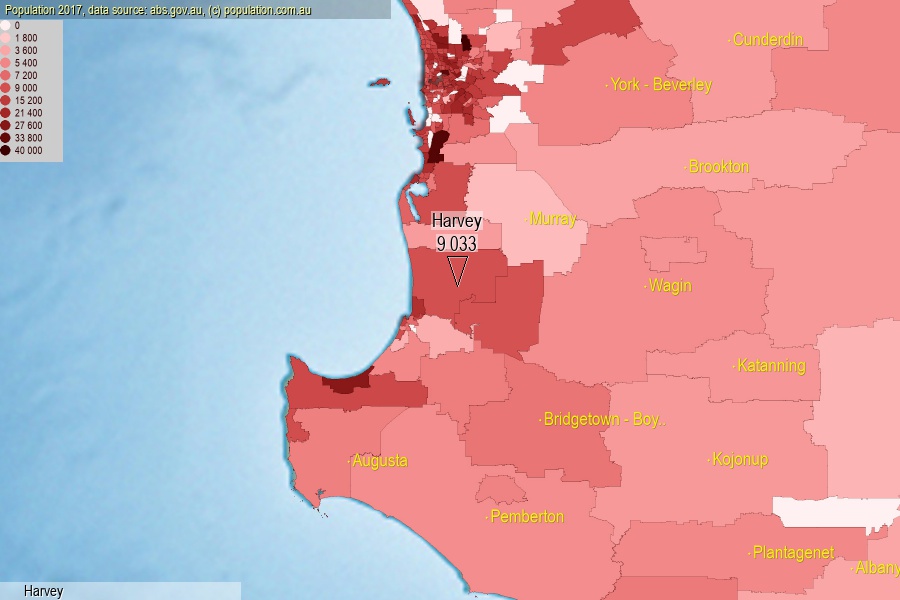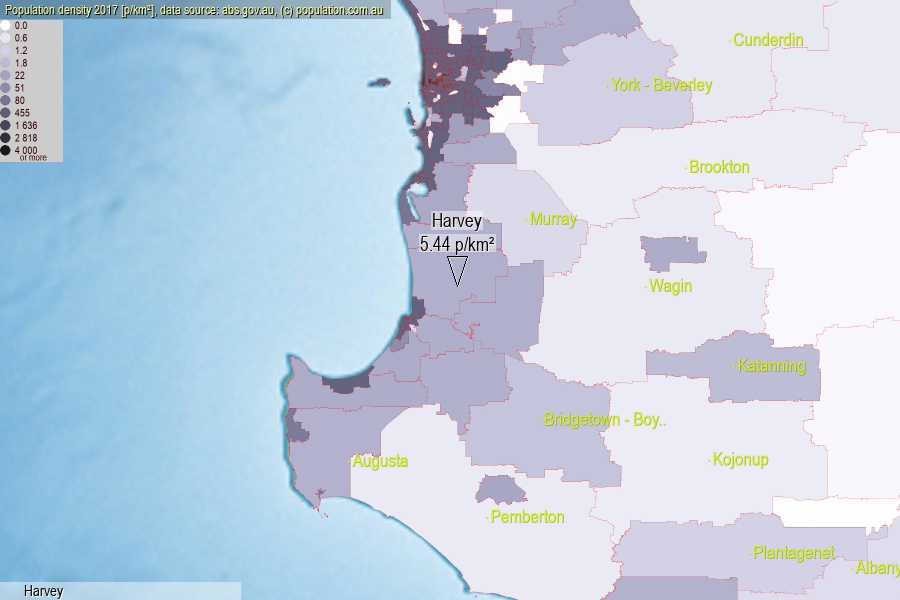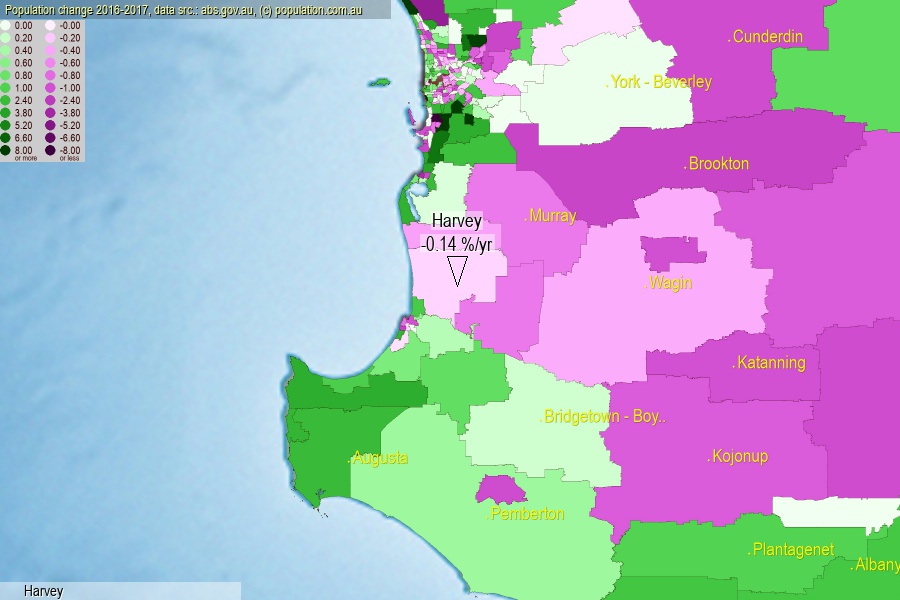 population.com.au
population.com.auLast official estimated population of Harvey (as Statistical Area Level 2) was 9 033 people (on 2017-06-30)[2]. This was 0.04% of total Australian population and 0.349% of WA population. Area of Harvey is 1 660.60 km², in this year population density was 5.44 p/km² . If population growth rate would be same as in period 2016-2017 (-0.14%/yr), Harvey population in 2025 would be 8 930. [0]



Click to enlarge. Harvey is located in the center of the images.
Population [people], population density [p./km²] and population change [%/year] [2]
View borders » (new window) [4]
[1991-1992] -2.03 %/Yr.
[1992-1993] -0.81 %/Yr.
[1993-1994] -1.96 %/Yr.
[1994-1995] +0.83 %/Yr.
[1995-1996] +6.37 %/Yr.
[1996-1997] +3.44 %/Yr.
[1997-1998] +2.84 %/Yr.
[1998-1999] +3.91 %/Yr.
[1999-2000] +0.65 %/Yr.
[2000-2001] +0.34 %/Yr.
[2001-2002] -1.11 %/Yr.
[2002-2003] -1.85 %/Yr.
[2003-2004] +1.55 %/Yr.
[2004-2005] +1.72 %/Yr.
[2005-2006] +1.31 %/Yr.
[2006-2007] -1.58 %/Yr.
[2007-2008] +0.94 %/Yr.
[2008-2009] +1.37 %/Yr.
[2009-2010] +1.08 %/Yr.
[2010-2011] +1.36 %/Yr.
[2011-2012] +2.14 %/Yr.
[2012-2013] +1.84 %/Yr.
[2013-2014] +1.32 %/Yr.
[2014-2015] +0.30 %/Yr.
[2015-2016] -0.68 %/Yr.
[2016-2017] -0.14 %/Yr.
[0] Calculated with linear interpolation from officially estimated population
[1] Read more about SA2 and Australian Statistical Geography Standard (ASGS) on abs.gov.au
[2] Population data from Australian Bureau of Statistics (Population and density: 2017; change: 2016-2017)
[3] Digital Boundaries: Australian Statistical Geography Standard (ASGS) 2016.
[4] Border coordinates are simplifyed using Ramer-Douglas-Peucker algorithm.